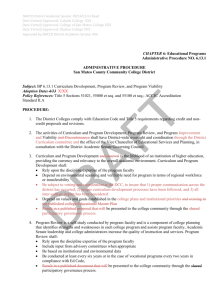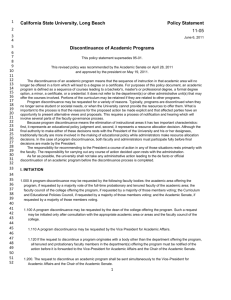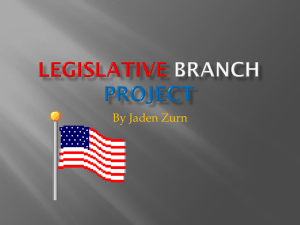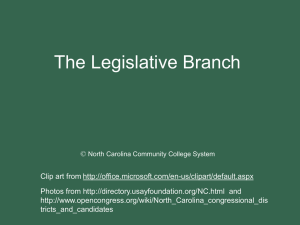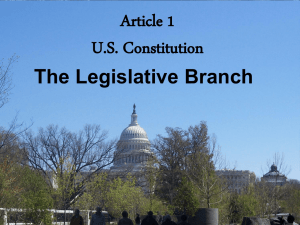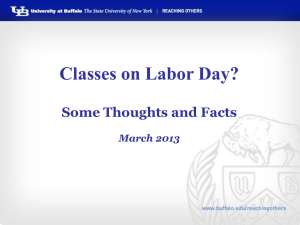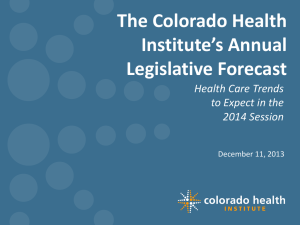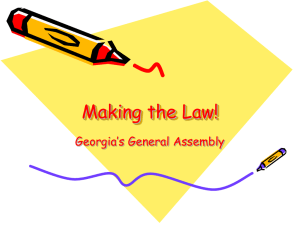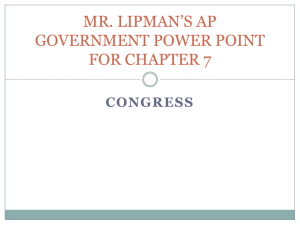Curriculum Concerns in Program Viability and
advertisement
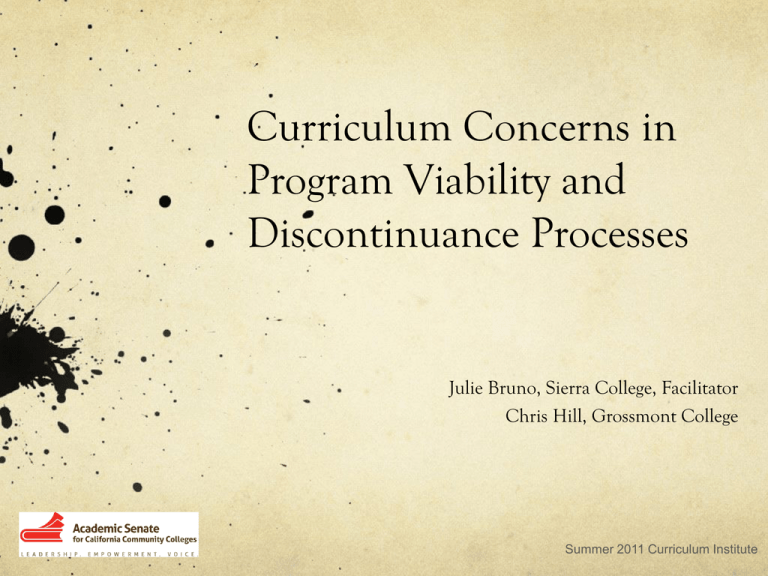
Curriculum Concerns in Program Viability and Discontinuance Processes Julie Bruno, Sierra College, Facilitator Chris Hill, Grossmont College Summer 2011 Curriculum Institute Why Program Discontinuance? Program discontinuance is at the forefront for a number of reasons: Program Review and Analysis trends Changes in demand in the workforce Changes in requirements from transfer institutions Availability of human, physical, and fiscal resources Budget concerns What is the Definition of a Program? Title 5 §55000(g) defines an educational program as "an organized sequence of courses leading to a defined objective, a degree, a certificate, a diploma, a license, or transfer to another institution of higher education.” “an instructional program is defined as a discipline and as an organized sequence or grouping of courses leading to a defined objective such as a major, degree, certificate, license, the acquisition of selected knowledge or skills, or transfer to another institution of higher education” Statute, Regulation, and Accreditation Title 5 §51022 requires that “Within six months of the formation of a community college district, the governing board shall adopt and carry out its policies for the establishment, modification, or discontinuance of courses or programs. Title 5 §55130 specifies that program approval is effective until the program or implementation of the program is discontinued or modified in any substantial way. Title 5 §55601 requires local governing boards to appoint advisory committees: “The governing board of each community college district participating in a vocational education program shall appoint a vocational education advisory committee to develop recommendations on the program and to provide liaison between the district and potential employers.” Statute, Regulation, and Accreditation Ed. Code 78016 - Every vocational or occupational training program offered by a community college district shall be reviewed every two years by the governing board of the district to assure that each program, as demonstrated by the California Occupational Labor Market Information Program established in Section 10533 of the Unemployment Insurance Code, or if this program is not available in the labor market area, other available sources of labor market information, does all of the following: Meets a documented labor market demand Does not represent unnecessary duplication of other manpower training programs in the area Is of demonstrated effectiveness as measured by the employment and completion success of its students. Statute, Regulation, and Accreditation Accreditation Standard II.A.6.b states that; “when programs are eliminated or program requirements are significantly changed, the institution makes appropriate arrangements so that enrolled students may complete their education in a timely manner with a minimum of disruption.” 10+1 Role of Academic Senate The Academic Senate's primary function is to make recommendations with respect to academic and professional matters as follows: Curriculum, including establishing prerequisites and placing courses within disciplines Degree and Certificate requirements Educational Program Development Title 5 §53200 Who Needs to be Involved? Academic Senate Governing Board Curriculum Committee Transfer center coordinator Occupational Advisory Committee Collective Bargaining Unit Appropriate Educational Administrator(s) Affected Faculty, Students and Staff What is the Relationship or Linkage with Program Review? The longstanding position of the ASCCC has been that the process of program discontinuance should be kept distinct from program review. See updated 2009, ASCCC paper entitled Program Review: Setting a Standard. Relationship / Linkage with Program Review Relationship program discontinuance has to Program Review processes and criteria: During regular, periodic program review, principal material is self study and institutional research. During consideration of program discontinuance, program review self studies are not referenced. Institutional research data from previous as well as current program reviews used. During program discontinuance processes, program faculty and administrators provide responses to and submission of whatever information they feel pertinent. What are the Curricular Issues? Need to consider: Impact on students currently within the program Availability of program at other regional colleges Impact on the balance of course offerings across the curriculum Maintain student's ability to transfer or complete a program Impact on other programs Impact on local employers What should the Criteria in a Program Discontinuance Process Look Like? Criteria should: Be clearly stated Contain uniform measures applied to all programs Contain specific measures for categories of programs (i.e. vocational, transfer) Include narrative analysis of data elements by program faculty Be based on trends over time Identify definite steps taken to strengthen at-risk programs Discussion Activity How is Program Discontinuance initiated at your college? Case Study – Initiating Process Saddleback CC - Program discontinuance discussions can be initiated in college governance forums including the Planning and Budget Council, Deans Cabinet, and the Academic Senate, as well as the individual divisions and/or departments, the Office of the President, Vice President of Instruction and/or Vice President of Student Services Fullerton CC - Upon receipt of an informal proposal for discontinuance of a program, or at his/her initiative, the Vice President for Academic Affairs (VPAA) shall conduct a preliminary review. Formal proposals for the discontinuance of a program shall originate with the VPAA. Solano CC - The Vice President of Academic Affairs and the Division Deans shall develop a proposed list of programs to be reviewed. Individual Divisions or Departments/Disciplines may also make proposals for the discontinuance of courses or programs to the Vice President of Academic Affairs and the Division Deans. Discussion Who leads and who is involved in Program Discontinuance at your college? Case Study – Working Group Saddleback CC – Academic Senate forms a Program Discontinuance Committee Fullerton CC – Academic Senate Executive Committee forms Ad Hoc Discontinuance Review Subcommittee. Solano CC - The Division Dean and the faculty for each affected Program shall conduct a self-study of the affected Program … As soon as possible following the completion of the self-studies, the Vice President of Academic Affairs shall notify the Curriculum Committee and provide it with the proposed list of affected programs and copies of the self-studies. … an Evaluation Committee shall be initiated by the Senate to continue the process. Irvine Valley CC - The Office of the President and the Academic Senate shall jointly form a Program Continuance Task Force including faculty, staff, administrators and other parties potentially affected by the decision. Discussion What criteria (qualitative and quantitative) do you use to evaluate programs in your Program Discontinuance process? Case Study – Evaluation Criteria Qualitative Criteria Quantitative Criteria •The pedagogy of the discipline, i.e. are the methods, analyses, and techniques currently used appropriate and updated? •The balance of college curriculum •The effect on students as a result of the discontinuance of the program, including their ability to complete a degree/certificate or transfer •The potential for a disproportionate impact on diversity •The quality of the program •The replication of programs •Enrollment trends over the past five years. •The projected demand for the program in the future. •The persistence of students in the program. •Frequency of course section offerings. •Term to term persistence (significantly below the college average) of students within the program. •Retention or success rates (significantly below the college average) of students. •Productivity in terms of WSCH per FTE ratios. •Success rate of students passing state and national licensing exams Case Study – Recommendation Options Recommendation to Continue Recommendation to Continue with Qualifications – includes a timeline, interventions, and expected outcomes Recommendation to Discontinue – includes: Timeline for phasing out program Plan for implementing collective bargaining requirements Any external licensing or regulatory recommendations Case Study – Final Steps Saddleback CC – Recommendations are forwarded to Academic Senate, then to College President. Fullerton CC - The Ad Hoc Subcommittee shall forward its recommendation to the Planning Resource Budget Committee. The PRBC shall forward its recommendation to the Academic Senate, then it goes to the College President. Solano CC - Following submission of the Evaluation Committee report to the Curriculum Committee, the Curriculum Committee shall vote, after full discussion with the Evaluation Committee members and all relevant constituencies, on whether the Program should be modified, continued or discontinued. The Curriculum Committee forwards its recommendations to the College President with a copy to the Academic Senate. Irvine Valley CC – Task Force makes recommendations to the Academic Senate, who then make a recommendation to the VPI. VPI carries the recommendation to the President's Executive Council. Concluding Thoughts Program discontinuance should include: Well-articulated board and administrative policy Discussion involving a number of groups including the Academic Senate, appropriate administrators, affected faculty, appropriate community members, as well as the collective bargaining unit Careful consideration of qualitative and quantitative criteria Process for recommendations that focus on helping identify a program's weaknesses and needs and providing guidance for improvement, rather than just on elimination Questions or Comments?
